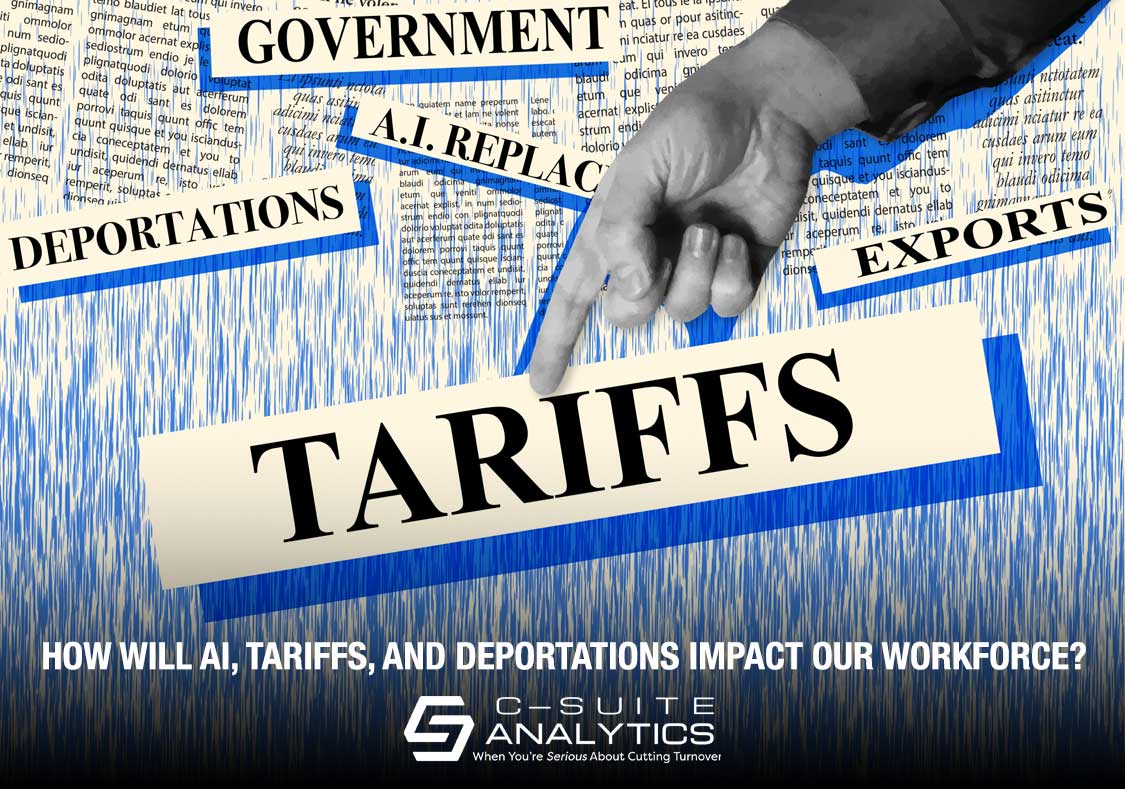AI, deportations, tariffs, and birthrate declines are reshaping America's workforce—blue- and white-collar alike. From baby boomer exits to AI disruptions, breaking down the workforce challenges no leader can afford to ignore.
Two Things I Can Predict About Working From Home

Non-established relationships will never fully develop…and connections with new hires will be mostly transactional. And that’s coming your way from an optimist, and one who works from home and favors working from home for everyone.
As someone who writes books so must stay current, I’ve read about everything on this subject, greeted by my computer each morning with posts from the Wall Street Journal and other online publications. Since working from home…WFH from here on…is rightly trendy, there are daily articles about its plusses and minuses along with the usual predictions of who will/how many will eventually work that way in the “new normal”. Hardly reported at all is the greatest WFH positive, that employers can then hire from anywhere versus a commutable location from home to the office. I know that from our work here at C-Suite Analytics.
So I can rattle off endless numbers and stories on this topic but two reports stick with me. The first from a major corporation CEO who said:
“I am concerned that we would somehow believe that we can basically take kids from college, put them in front of Zoom, and think that three years from now they’ll be every bit as productive as they would have had they had the personal interaction.”
The second regards the first major WFH killjoy, Marissa Mayer, who immediately after being appointed CEO of Yahoo in 2013 pulled the plug on all WFH saying…
“Some of the best decisions and insights come from hallway and cafeteria discussions, meeting new people, and impromptu team meetings. We need to become one Yahoo!”
Surprising to some was that this trend-reverser was a working mom.
WFH is hardly new so any predictions about its strengths and weaknesses have already been proven, just not the grand scale that we might soon see. But having said that, WFH during the pandemic is not the same as regular, organized, we-all-buy-into-this WFH that we will see in the future. Covid-emergency WFH was we’ll-buy-you-a-desk WFH. Upcoming WFH will be more permanent and less feel-good…the real deal. With jealousies included regarding who gets to WFH and who does not.
For some realistic perspective, a University of Chicago study tells us the limit on U.S. employees whose jobs could permit them to work from home is 37%, while another study says the percentage who worked from home pre-pandemic was 7%. So these statistics give us the range of potential growth.
But back to my two predictions. Employers everywhere have a huge knowledge gap regarding the importance of supervisory relationships versus the very minimal impact of one-size-fits-all programs. Think of how your company responds to engagement survey and exit survey results. Career day, employee appreciation week, CEO videos mean little, and please stop giving away company clocks. And this trend is hardly U.S.-centric as I’ve seen the same on all inhabited continents. Chinese companies do the same things.
So how will WFH impact supervisor-employee relationships? Zoom calls will be transactional, chit-chat will be forced, and online “socials” will come up short because there won’t be the same corner-of-the-room individual conversations where employees share personal information. Out-of-work friendships are far less likely to form, the kinds that happen when we all go out to a pub after work. We will have the same focus on tasks but become more robotic as humans.
I want to say this in caps but will refrain. The #1 reason employees stay or leave…or engage or disengage…is how much they trust their boss. Yet our re-directing ourselves from “fixing” engagement and retention with employee programs is as hard as disciplining our tongues from sliding against a recently-chipped tooth. We just can’t seem to do it.
And one reason we can’t switch from programs to supervisory effectiveness is we don’t know how. History has told us to implement “supervisory training”, maybe the very popular Situational Leadership course where Maria learns there are four leadership behavioral styles and she must apply one of these four leadership styles based on the four choices of maturity levels of the group she is leading.
Sounds impressive. Weeks later though, the course’s value must be measured by how much Maria remembers and chooses which of the four leadership styles and four maturity levels she is facing.
The point is, not all supervisory training is the same and much of it brings zero long-term results. And this is where Stay Interview training shines because leaders apply their newly-learned skills of asking, probing, listening, and note-taking the day after training…and they do all of this to build trust. Because as I said a few paragraphs ago, THE #1 REASON EMPLOYEES STAY OR LEAVE…OR ENGAGE OR DISENGAGE…IS HOW MUCH THEY TRUST THEIR BOSS.
Sorry…just couldn’t stay lower-case this time. There is a reason why Stay Interviews cut turnover by 30% and more, and improve employee engagement the same amount. And with more WFH on its way, our organizations have never needed Stay Interviews more.
Dick Finnegan is SHRM’s top-selling author and top-rated webcast presenter. Please email your comments to DFinnegan@C-SuiteAnalytics.com. Contact Dick to discuss how we can help you retain your valuable employees. You are also welcome to forward this blog to anyone you believe would find it helpful.



